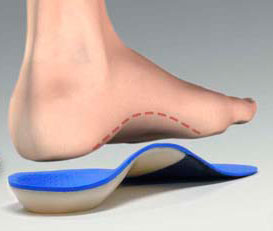 History and Presenting Symptoms
History and Presenting Symptoms
A 32-year-old male presents with a history of mild to moderate lower back pain, and aching tightness in his neck. He states that his back pain comes and goes, with no specific triggering activities. His neck tension is worse with long and stressful workdays. He participates in no recreational sports or exercise activities, and recalls no back or neck injuries. On a 100mm Visual Analog Scale, he rates the low back pain as usually 30-40mm, and his neck tightness as around 25mm.
Exam Findings
Vitals. This man weighs 221 lbs, and is 5’10’’ tall. This calculates to a BMI of 32—he is obese. His waist measures 48 inches at the largest point above the ASIS, confirming that he has abdominal obesity, and is not just big and/or muscular. His blood pressure is somewhat elevated at 142/90 mmHg, and his pulse rate is 80 bpm.
Posture and gait. Standing postural evaluation identifies the effects of abdominal obesity, with a loss of the lumbar curve, and an accentuated thoracic kyphosis, with a forward head carriage. There is no obvious lateral listing of the pelvis or lateral curvature of the spine. He has mild bilateral knee valgus and bilateral calcaneal eversion, and very flat medial arches. During gait evaluation, both feet flare outward and pronate substantially.
Chiropractic evaluation. Motion palpation identifies several limitations in intersegmental spinal motion: the right SI joint, L4/L5 on the left, L2/L3 on the right, T11/12 generally, and several levels at the cervicothoracic junction. There is no specific spinal tenderness or spasm of the paraspinal muscles, but adipose tissue is prevalent throughout. All active thoracolumbar spinal ranges of motion are limited slightly by general stiffness. Neurological tests are negative for nerve root impingement, but straight leg raise is limited bilaterally by hamstring shortening and tightness.
Imaging
Upright, weight-bearing X-rays of the lumbar spine demonstrate loss of intervertebral disc height at L4/L5 and L5/S1, with moderate osteophyte formation at those levels. There is no discrepancy in femur head or iliac crest heights, and no lateral listing or lateral curvature. The sacral base angle and lumbar lordosis are both decreased; this is consistent with the postural analysis.
Clinical Impression
Chronic spinal stress syndrome due to obesity. This is accentuated by poor support from the lower extremities, with bilateral knee valgus, hyperpronation and calcaneal eversion.
Treatment Plan
Adjustments. Specific, corrective adjustments for the identified subluxations were provided as needed, with good response. Specific manipulation of both feet and knees was also performed.
Support. Custom-made, flexible stabilizing orthotics were provided, to support the arches and decrease stress to the knees and back during walking. A custom-made cervical traction pillow was ordered, based on four specific measurements.
Rehabilitation. He was started on a localized spinal activation and strengthening program, using elastic resistance tubing for the multifidus muscles—first in extension, then into rotation and lateral flexion. In addition, he was counseled on building up to sixty minutes a day of moderate physical activity for weight loss. He chose to walk for thirty minutes during lunchtime and, after two weeks, added an additional thirty minutes before his evening meal. He used an exercise log as part of his motivation for sustaining his healthy behaviors, which included returning to a previously successful healthy diet program.
Response to Care
He tolerated his adjustments well, and adapted to the orthotics and cervical support pillow with no difficulty. His low back symptoms resolved quickly and, shortly thereafter, his neck tightness disappeared. His brisk walking program did not exacerbate his back pain, even when he increased to a total of sixty minutes daily. After six weeks of adjustments (twelve visits) he was released to a maintenance program with instructions to continue his exercise and healthy diet program.
Discussion
Obesity is increasing in prevalence in all industrialized countries, since few of us must perform physical labor to obtain our food. The accumulated weight places increased stress on the lower extremities and spine, resulting in chronic symptoms and accelerating degenerative changes. Specific spinal adjustments and custom support for the spine and lower extremities need to be combined with individualized exercise instructions for best results. An exercise/dietary log can improve patient adherence to recommended lifestyle changes.
Dr. John J. Danchik is the seventh inductee to the American Chiropractic Association Sports Hall of Fame. He is the current chairperson of the United States Olympic Committee’s Chiropractic Selection Program and lectures extensively in the United States and abroad on current trends in sports chiropractic and rehabilitation. Dr. Danchik is an associate editor of the Journal of the Neuromusculoskeletal System. He can be reached by e-mail at [email protected].
